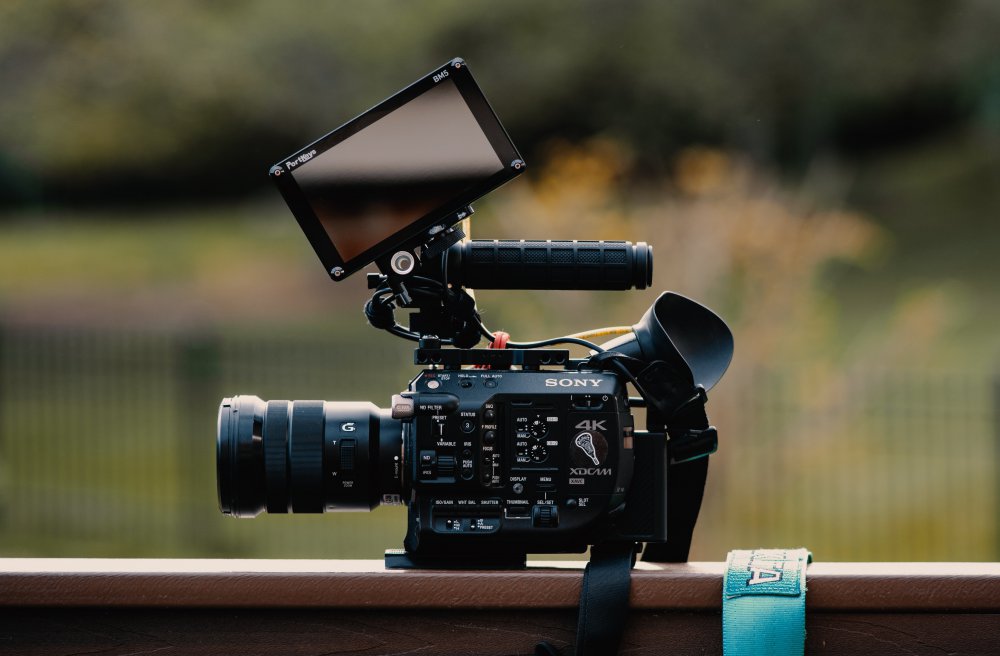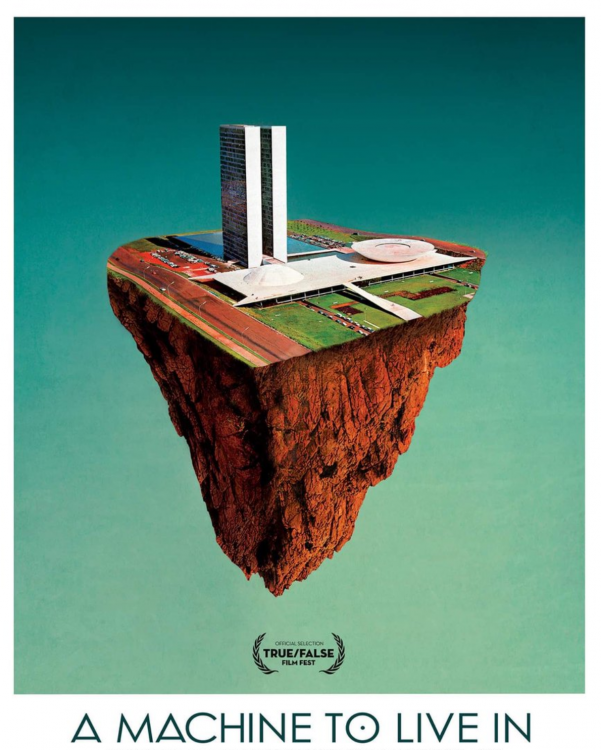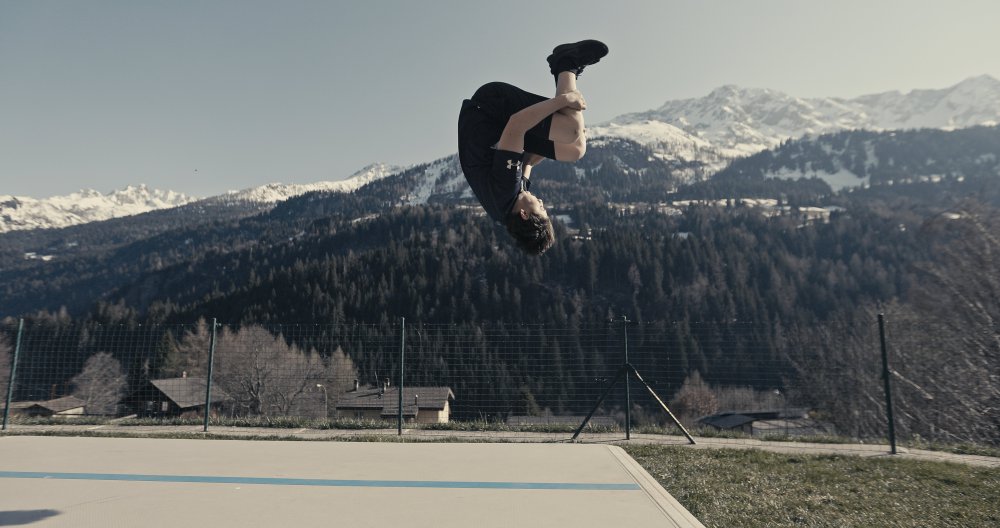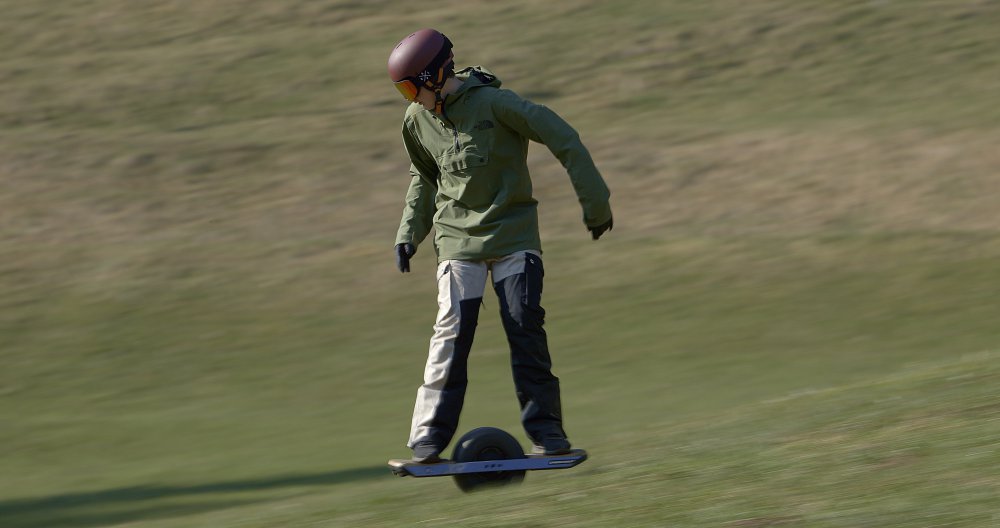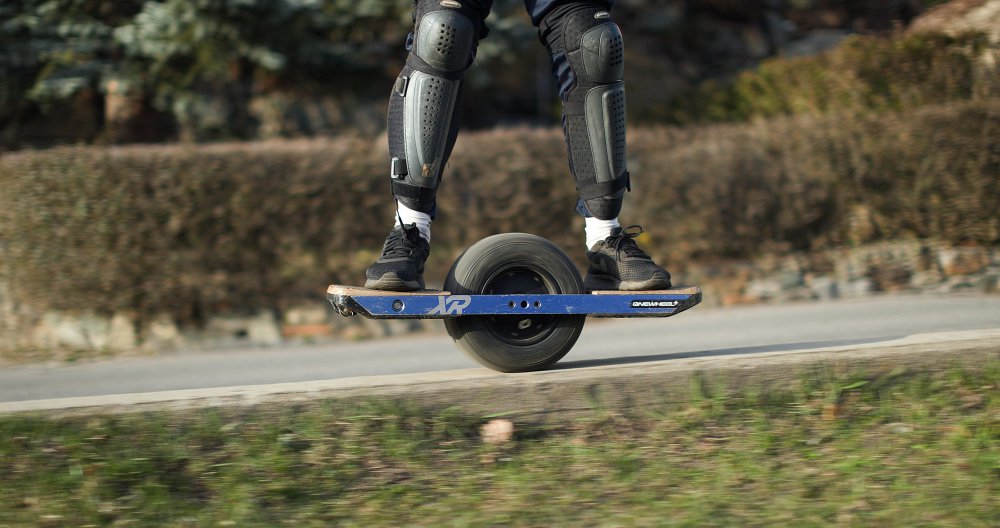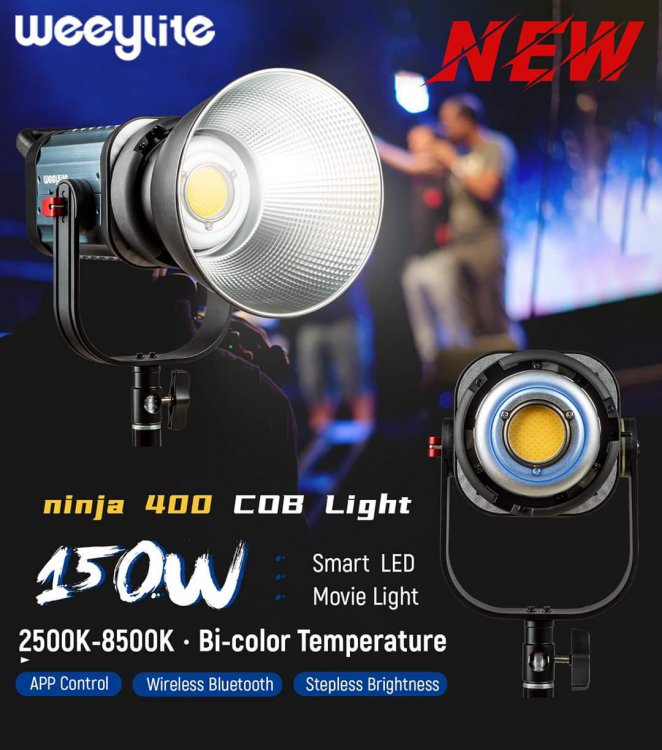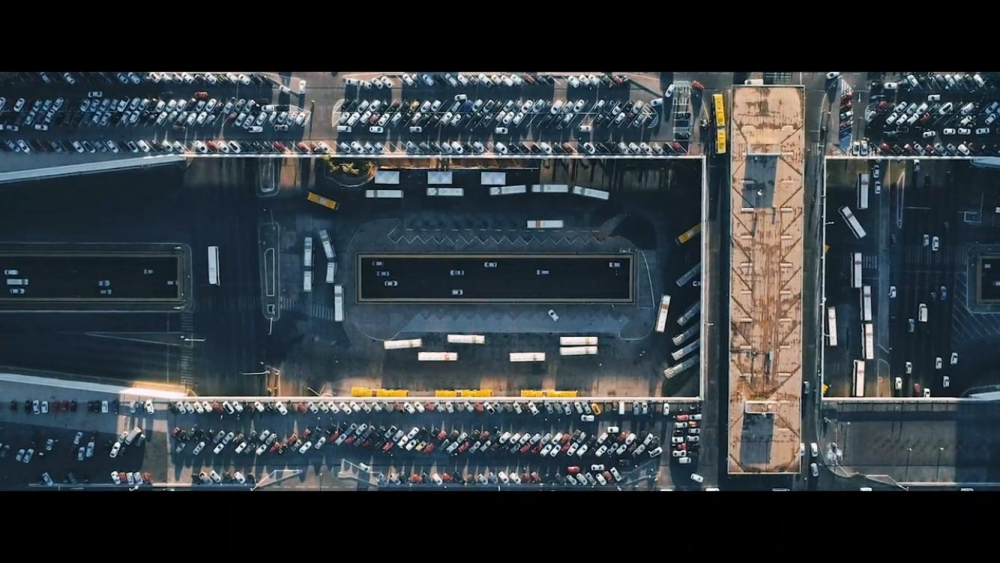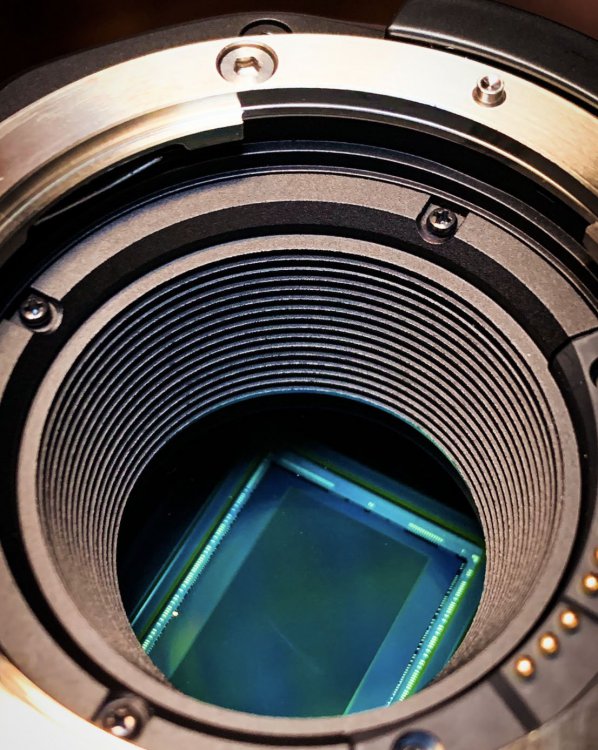Leaderboard
Popular Content
Showing content with the highest reputation on 04/10/2020 in all areas
-
NAB would have started on 11th April - Still no A7S III?
Kisaha and 5 others reacted to Video Hummus for a topic
“WHY I’m SWITCHING to the SONY A7SIV”, “SONY A7SIV. T’S A BEAST”, “SHOULD You SWITCH to the Sony A7SIV? I AM SWITCHING!”, “WHY the A7SIV is THE BEST CAMERA of 2020”. 2 Weeks later... ”I’M DITCHING Sony for the CANON EOS R5!”, “GOODBYE A7SIV!”, “I’M FINALLY making the SWITCH from SONY to CANON. EOS R5 REVIEW!”, “THE BEST CAMERA of 2020. CANON EOS R5!” 1 Month later... ”WHY I’m SWITCHING back to the EOS R”, “WHY I’m SWITCHING back to my OLD CAMERA and YOU SHOULD TOO! It’s NOT About the GEAR!”, “WHY THE SONY A7SIV is NOT THE CAMERA for ME. SWITCHING BACK!”, “MY BIGGEST MISTAKE in SWITCHING from SONY to CANON and back to SONY. DON’T DO THIS!”. Tony Northrop... ”Micro Four Thirds is DEAD. SONY A7SIV REVIEW”, “CANON EOS R5 REVIEW. M43 is DEAD!”, “M43 BIGGEST MISTAKE. DON’T BUY THIS”.6 points -

PortKeys BM5 – A Field Monitor That Can Control Your Camera
Kisaha and 3 others reacted to Mako Sports for a topic
I pulled the trigger on the BM5 and decided i'll do a little review on it. PROS Very bright with a solid build quality. Colors are accurate and I love being able to load and store luts in the monitor. SDI + HDMI are also a bonus. Monitor comes with a few cables like a dtap and camera control. You will need to supply your own mounting hardware and batteries. The False color is solid, no crazy latency issues either. The monitor is VERY sharp, so sharp you might need to dial it down. Depending on what your shooting you might not even need peaking as the perceived detail is enough to pull focus from. I really enjoy the fact that you can do monochrome viewing + color peaking. Makes manual focus very easy. Use NPF/Sony L batteries = cheap and very abundant. CONS There are some things that irk me about the monitor. For instance you have toggle through every view mode when using the waveform. (I only want to use the view mode when it takes up a smaller portion in the corner of the screen.) With the focus peaking it will put the color edges around your camera screen icons which is annoying. I don't remember either of my SmallHDs doing that. The Zebra setting has numerical values that make no sense, its not the typical 0 - 109 IRE. The fan when set to high is pretty loud but that's to be expected with a 5 inch monitor that's 2200 nits! I leave mine set to medium speed usually. The UI as a whole sucks compared to SmallHD's, its slower and not as intuitive. This is by far the biggest pitfall of the monitor and what keeps it from be a 5 star product. I use it with my FS5 and A7iii. Its a fantastic monitor for outdoor viewing with the 2200 Nits. I shoot sports outdoors and a lot times under the mid day sun and I haven't had any viewing issues with it. With the FS5 I use batteries with a dtap port so I don't have to use extra NPF batteries on the back of the unit. CONCLUSION Overall a very good value for $500, a good alternative if you want something more rugged than an Atomos Shinobi/Smallhd FOCUS but think the SmallHD 502B/503 ultrabright are to expensive.4 points -
NAB would have started on 11th April - Still no A7S III?
Trek of Joy and 3 others reacted to Mark Romero 2 for a topic
4 points -

Doc "A Machine To Live In"
filmmakereu and one other reacted to Emanuel for a topic
Doc shot mainly on RED cameras (90%+ of the film was shot on the Epic MX/Dragon), I am professionally involved throughout my activity as film producer and this unique endeavour with my veteran buddy Andrew Benz (Executive Producer and Cinematographer https://twitter.com/benzdigital) over 8 summers in Brasilia (Brazil) and the producer Sebastian Alvarez. Directed by Yoni Goldstein and Meredith Zeilke. One of 8 films selected by 2017 Dok.Incubator. Top prize, the Finishing Award, valued at over €12 000,00 to have credits and 2K SDR and 4K HDR color correction & DCP done in Luxembourg at Espera Studios. North American Premiere at True/False Film Festival 2020. International Premiere at Visions du Réel in their Burning Lights International Competition. https://www.visionsdureel.ch/en/2020/film/a-machine-to-live-in https://www.instagram.com/amachinetolivein/ https://facebook.com/profile.php?id=673829559432300 https://twitter.com/AMTLI2020 http://blog.ultrabrasilia.com/2 points -

Old Cameras Still Shine Today
Geoff CB and one other reacted to Mr. Freeze for a topic
Here´s a quick comparison I did of the two cameras. Because I don´t have my Micro Camera with me right now, I compared the original BMPCC with the Pocket 4K. I used the 24mm Rokinon/Walimex Lens on both cameras in combination with a Focal Reducer from MFT to EF. The grading was done in Resolve.2 points -

Deep dive on super fast lenses
heart0less and one other reacted to kye for a topic
I guess I should have clarified that an MFT + fast lens setup is cheaper than a FF + prime setup. It's the FF mania that makes that platform more expensive overall. Once again, there are many many variables, and we are not considering them, but on the whole those other variables total up to be much more significant in the choice of platform than just low light, with the exception of extreme low-light where you need the FF option. We can disappear down the rabbit hole of FF vs MFT, but we've all been there and done that. Instead, my point was that MFT can be a good option with its own advantages which FF has not yet matched/surpassed for all users with all sets of requirements.2 points -
Key Light (Bowens Mount) Less Expensive Than Apurture?
ntblowz and one other reacted to Mark Romero 2 for a topic
New Godox model that sounds promising. Supposed to be similar to the Apturure mdoels but cheaper by several hundred dollars.2 points -
2 points
-

One Single Room | Film Challenge
heart0less reacted to Emanuel for a topic
Hadn't watched yet, an uncle of mine had died on the eve of your post, so only today. Left my comment on vimeo : ) Very impressed, buddy! : ) I guess that thing bigger than life has just won one more child... first short film? WOW : -)1 point -

Doc "A Machine To Live In"
Danilo Del Tufo reacted to Emanuel for a topic
Andrew Benz credits ; ) That drone shot done by his hands and directors' inspiration is incredible, my fav drone shot ever! : ) Need to enjoy it there in the middle of the doc stream... Thanks for your kind words (E : -)1 point -

Doc "A Machine To Live In"
Emanuel reacted to Danilo Del Tufo for a topic
Emanuel, that's great! Very beautiful cinematography delivering warm and harmonious mood and sets the ambience. Good luck, and keep up the good work. 🙂1 point -
Tel Aviv under lockdown
heart0less reacted to izash for a topic
Tel Aviv seemed strange on Passover Eve. Contrary to the eve of Yom Kippur, when the cars stop running and kids fill the streets with their bikes and screams of joy, the streets just emptied and became silent. Moments before the full lockdown, I took my camera to the streets of my desolated neighbourhood. the song After the Storm, written by Alona Kimhi and myself, is the soundtrack of these images. Happy Holidays and stay safe. Shot with Z-Cam E1, Crane_m gimbal, Lumix 7-14 lens. Edited with FCPX. https://vimeo.com/4062410251 point -
Canon EOS 1D MKIII specs revealed
Rinad Amir reacted to gt3rs for a topic
1 point -
This guy is a genius
heart0less reacted to Video Hummus for a topic
Please consider subscribing and dropping this guy a comment if you like what he does. He also now has memberships through YouTube if you would like to support more directly. We need more of this on YouTube.1 point -
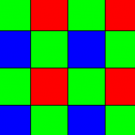
Sigma Fp review and interview / Cinema DNG RAW
Andrew Reid reacted to rawshooter for a topic
With all due respect, the matter is more complicated: DNG (whether stills DNG or CinemaDNG) contains internal color matrixes. If a camera manufacturer doesn't provide raw specifications - like Sigma unfortunately does - then Raw developing software (no matter whether it's Lightroom, RawTherapee, Resolve, After Effects...) just interprets the raw DNG data based on the internal color matrixes. That is not optimal but works good enough for photographers who usually work in the sRGB or in the AdobeRGB color space. However, as film people, we're now used to work in wider color spaces - making proper use of the 10bit/OLED/DCP etc. screens that increasingly replace legacy 8bit/Rec709 HDTV - such as Aces, P3, Rec2020. However, this is the point where DNG without additional camera manufacturer support fails, and where NO software, no matter whether Resolve or anything else, can properly figure out how the RAW color values should be interpreted. So, in this case, it's upon Sigma to step up and help manufacturers across the board (no matter whether Adobe for AfterEffects, Blackmagic for Resolve, Assimilate for Scratch, Apple for FCPX...) and share information about the fp's native color space if they want to promote the fp as a serious cinema camera. Otherwise, we can't really make use of the full color spectrum captured by the fp, but will be limited by the Rec709 color space even when grading RAW.1 point -
Key Light (Bowens Mount) Less Expensive Than Apurture?
heart0less reacted to AlexTrinder96 for a topic
There's also a new light from viltrox out soon; it looks promising. Bicolour also. Hopefully we'll see some reviews soon! https://viltroxus.com/products/weeylite-ninja-400-bicolor-smart-cob-led-light-150w-brightness-adjustable-light-cri-95-suitable-for-portrait-or-movie-television-scenes?_pos=1&_sid=290c4b9d6&_ss=r1 point -
The Pentax Q has a pretty gnarly crop-factor.. and probably needs all the help it can get with fast lenses for low light exposure!1 point
-

Old Cameras Still Shine Today
Video Hummus reacted to kye for a topic
A real-world review of the Panasonic G7 from a film-maker (as opposed to an equipment reviewer): Plus you can see actual narrative work from it on his channel too.1 point -
One thing that is interesting is that they didn't cover the effects of sensor size on DoF vs exposure value. For example my Voigtlander f0.95 MFT lenses are faster than something like a f1.2 FF lens, and they are if we're talking exposure value where they're brighter, but they're not if we're talking about shallow DoF where they have the same DoF as a FF F2 lens. This gives a very interesting advantage for my GH5 which is that I can shoot in low light conditions where an F1 exposure value is required (especially considering the GH5 isn't dual-ISO and not that great in low-light) but I only have to focus with a DoF equivalent to an F2 lens, which is far more manageable in practical terms. The video spends time talking about the limitations of how to work with such a shallow DoF and most of the time it's a liability in terms of limiting actors movements, having to film things backwards in order to nail focus, etc. Yes, the OOF areas give it a surreal and very interesting aesthetic, but in the context of getting usable exposure in a low-light scenario a smaller sensor is better. Also, the price of the f0.95 MFT lenses is a fraction of the price of F1 or faster FF lenses, they're smaller, lighter, etc etc. If you wanted to do extreme low-light shooting today I think that you have to go the Sony FF + prime lens route and use the high ISO performance of the camera, but if you only need low-light and not extreme low-light then a modern MFT camera with a F0.95 lens can also be a practical choice. My GH5 + f0.95 lens combination can see better in low-light than I can, and I have much better night vision than most other people.1 point
-

Doc "A Machine To Live In"
heart0less reacted to fuzzynormal for a topic
My wife is Polish and I feel the same about Poland. Mostly because I'm ignorant about what really goes on in Poland and I just think it looks pretty.1 point -
That is possibly the best You Tube video i have ever seen as far as I am concerned. Mind you, If you want shallow DOF you are much better off using a larger sensor and the same if you want to shoot in low light. A longer lens also works though a "fast" longer lens is not THAT fast. I love using fast lenses on a decent low light camera. A 1.2 lens on an A7s at ISO 102400 will shoot in light lit by a LED on a small appliance. I remember when that Ibelux 40mm f0.85 first version came out under the Handevision name it cost a few thousand dollars but after not too long a time had dropped in price to about a quarter or so of its original price. Those f0.95 lenses seem to have a LOT of gimmick about them since that is like the difference between a f2 lens and an f1.9 lens...may as well call them f1 other than for marketing (most lenses are not exactly what they are sold as) Cheapest way to do what they did would be to get a cheaper old FF camera (original A7 maybe) and the FF Mitakon 50 f0.95 (that lens would have been great to see them use I think). EDIT UGHH or maybe not ince I jut looked at the prices of the Mitakon 50 f0.95 for FF cameras....I would rather get a Canon FD L 50 1.2 for probably less (A very nice lens I regret selling).1 point
-
I fully understand you Márcio @Márcio Kabke Pinheiro, seems we have no alternative to look in any direction indeed. Well, you're welcome over here for sure! : ) We've fallen in love with your country, no matter the current nonsense panorama and how incredible the situation the country of Bossanova is living today... : X Remember Jorge Amado... Roque Santeiro? Universal language. Take a look on this other feature documentary financed by ARTE: It is ironic this great name of the Portuguese language and Brazilian culture died exactly last year, isn't it? ; ) In the same way, the feature doc A Machine To Live In praises Oscar Niemeyer's work but not only... One of the main themes of A Machine To Live In is Brazil’s dream of building a first world utopia and ended up dropping a nightmare into the Brazilian cerrado... The Citizens then took these themes of utopia building back to their satellite cities. These are their reactions so to speak to living in the Dream of the Others. shot from A Machine To Live In (2020) by the cinematographer Andrew Benz over Brasilia Rodoviária / central bus station1 point
-

NAB would have started on 11th April - Still no A7S III?
Video Hummus reacted to BTM_Pix for a topic
I'd only know through the relentless promotional mails I'm still getting off camera dealers. Seems particularly pointless buying anything here at the moment as any delivery courier would have to launch the parcel by catapult from outside our urbanisation to save himself from being hit by molotov cocktails hurled by the increasingly militant neighbourhood watch.1 point -

NAB would have started on 11th April - Still no A7S III?
Rinad Amir reacted to Django for a topic
Pretty sure a COVID-19 vaccine will be out before a new A7S. R5 sent Sony back to the drawing boards for the 28th time. Must be hard trying to exceed expectations in such a crowded industry.1 point -
Sigma Fp review and interview / Cinema DNG RAW
Andrew Reid reacted to Chris Whitten for a topic
For the record, I have been very happy using the FP in Resolve, either using the Cinema DNG default or BMD Film setting in the camera drop down on the colour page. I actually haven't encountered anything jarring or defective. It's been super easy to drop the footage in, grade it and export. If you are going to stress test Resolve with your FP footage, then yes, I'm sure you can find fault. But just as an editor and colour grader for normally balanced footage out of the FP, using 12bit or 10bit 4K I think it's absolutely fine. In order to get the nasty blotchy colour shift we were discussing earlier I had to take perfectly well balanced footage and increase the gamma and gain way beyond anything I would need.1 point -
If they have a sense of humour they'll announce the A7S IV instead.1 point
-

Old Cameras Still Shine Today
Geoff CB reacted to Mr. Freeze for a topic
@kye I try to find some time this upcoming weekend and do a little test between the two and record 1080p25 in CDNG with the Micro Cinema Camera and 2.6k and 25p with the Pocket 4K in BRAW.1 point -
I've asked myself the same question - it seems that there are just more DigiPrimes made in the first place, but that is anecdotal, I do not have numbers to prove it, just experience. I thinking is the rental houses bought the DigiPrimes and DigiZooms and maybe Zeiss was first to market, but who knows... At the moment, a DigiZoom 6-24 for $1,565.99 and $1,650.00 on ebay are hard to beat. For about half the money the Canon HJ11x4.7B KLL-SC $749 and CANON HJ21x7.5B-III KLL-SC $775 on ebay are also good deals if they are in good condition. They are kind of like the a DigiZoom set but by Canon and are not constant aperture, they are slightly slower to begin with and are (alittle?) softer than the DigiZooms. The Canons are each comparatively longer, however. The Canon 11x4.7 is a nice size, not too big, not too heavy. The 21x7.5B is large and heavy in comparison, but a very long range zoom: 21x. There is also the Fujinon HAc15x7.3 $2500, which is currently not cheap on ebay right now but they come up from time to time for less. This is a 15x constant aperture fast zoom lens with great resolution, little breathing, good illumination from edge to edge and a contrast level that is just right IMHO. It's great for live events and with nice bokeh at the long end. It is not for everything, as it is not wide enough to cover all situations, and it is too heavy to run and gun. The Canon 21x7.5 and DigiZoom 17-112 will also throw the background out of focus at the long end. There is also the Fujinon HAc13x4.5 4.5-59mm $899 on ebay. It's faster, longer, wider, has more contrast and is more resolved than the Canon 11x4.7, but the comparatively lower amount of geometric distortion and the lower amount breathing of the Canon makes you have to choose based on your priorities. So there you have it, the 3 wide and long lenses sets (Fujinon also makes an 18x but it is not constant aperture so I prefer the 15x) from Zeiss, Canon, and Fujinon. The clear winner is many of these lenses for under a grand or less if you have a compatible optical adapter and/or camera. I don't do a lot of stopping down, but when I have, I preferred the DigiPrimes wide open or almost wide open, as I like slightly less contrast and I think it is slightly softer as well, wide open, which hasn't bothered me. So I can't confirm or deny the color shift based on aperture changes with the DigiPrimes. I can confirm an increase in contrast when stopping down with the DigiPrimes.1 point
-

Old Cameras Still Shine Today
Geoff CB reacted to Mr. Freeze for a topic
My newest Camera is the Pocket 4k, a really great camera for what I do. Nevertheless, I bought a cheap Blackmagic Micro Cinema Camera last year and really like the images a lot. It´s maximum is 1080p60, but the images really look great and offer great options in the grading process. Combined with vintage lenses it creates really organic footage and there are a lot of situations I prefer this compact Camera to my Pocket 4k. Overall it depends on the look I want to achieve and the recording modes I need, but for a mid 2015 Camera in this small form factor, it´s insanely good.1 point -
Set up OBS to output a 4-camera multiview shot (without it titles and other overlays). Live stream the multi shot view to YouTube or Vimeo. Save recording and share with students. Easy one and done. I haven’t used OBS much so I can’t confirm if it can do that, but I know Wirecast and Livestream Studio 6 can and OBS is free so it’s worth checking that first. Alternatively you can use the same software to just film it as a 4-up 4K multi cam shot and record that to a file. From that you can extract 4x HD angles if you want to edit something with a single view or let people watch it as-is.1 point
-
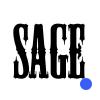
Filming a short film in isolation. self-made narrative.
Wild Ranger reacted to Sage for a topic
Buenisimo!1 point -

Filming a short film in isolation. self-made narrative.
Wild Ranger reacted to kye for a topic
Fantastic! Not only did the sock-reveal hit the beat perfectly, but the fact it stayed serious only extended the enjoyment. The ending was predictable (did you consider the puppet killing the guy?), but it was very well executed. Bravo!1 point -

Filming a short film in isolation. self-made narrative.
Wild Ranger reacted to ktfright for a topic
This is very creative!1 point -

One Single Room | Film Challenge
Emanuel reacted to heart0less for a topic
Alright, people, here is my take. Shot all by myself since no-one was keen to help me. ) : Lighting was quite simple, I only used already existing fixtures and modified them with some tape / baking paper to add warmth. X-T3 , Helios and DIY anamorphic.1 point -
1 point
-

Blackmagic 6K / EOSHD conspiracy debunked
ntblowz reacted to Andrew Reid for a topic
Some Blackmagic shills keep floating ridiculous conspiracy theories on here about my experience with the Pocket 6K, and even that I never used the camera! Time to put some facts straight then... It came damaged brand new from the cellophane. Here's proof: Shiny and sealed, ZERO damage to the pristine box or any signs of "rough courier handling": Here is the scratch mark on my sensor And here is me having to urgently clean the brand new sensor before setting off to the Italian Grand Prix at Monza: And finally here is me returning the actual Pocket 6K to Blackmagic at IBC in order to talk about the issues I had... And there is apparently an audio recording and further material from this encounter. Who wants to hear it?0 points -

Sigma Fp review and interview / Cinema DNG RAW
Andrew Reid reacted to rawshooter for a topic
Btw., the limitations and guesswork regarding the right color spaces for the CinemaDNG recorded by the Sigma fp apply to any software that can process CinemaDNG...0 points -

Sigma Fp review and interview / Cinema DNG RAW
Andrew Reid reacted to rawshooter for a topic
Naah, it's the opposite - Sigma doesn't provide a Log profile and corresponding color space yet (we have to wait till firmware 2.0 in summer), and doesn't provide any LUTs, Aces IDTs or other transformation functions for the fp's CinemaDNG so that in the meantime, we're limited to grading the material in Rec709 although the camera has a wider gamut/more color. It's likely because Sigma doesn't have any previous experience with video and digital cinema while the stills photography world still lives in sRGB (=almost the same as Rec709) or Adobe RGB at best, and thinks that paper prints (with their 5 stops dynamic range) are the Nirvana of image quality...-1 points

